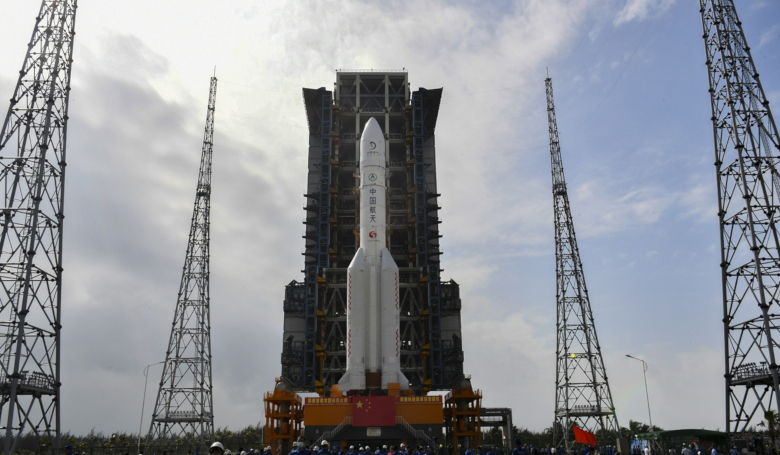China’s Chang’e 5 mission, an ambitious expedition to bring samples of the lunar surface back to Earth for study, is getting ready to launch tonight around 20:35 GMT (04:35 local time on 24 November), say the European Space Agency (ESA) who will be supporting the mission by relaying signals from the spacecraft during two critical phases.
Scheduled to lift off from the Wenchang Space Launch Center in Hainan, a 57-metre Long March 5 heavy-lift carrier rocket, which was transported to a port in Wenchang by ships in late September, has been rolled out and placed vertically on the launch pad after leaving an assembly building last week.
China's second-generation space tracking ship, Yuanwang 3, has also left port and is getting ready to track the lunar probe, say the countries state media website.
Prior to today, few details have been put forward by China’s National Space Administration regarding the launch, other than it would take place in late November.
However state media have reported this morning, that the Long March 5 would start to be injected with liquid oxygen and liquid hydrogen propellants at its launchpad around 6:30 pm (Monday) and that lift off is scheduled for between 4 am and 5 am (local time).
The sixth mission in the Chang'e program, China’s 8.2-metric ton Chang'e 5 has four components; an orbiter, lander, ascender and re-entry module.
The lander and ascender are targeting a site close to Mons Rümker, a large volcanic formation in Oceanus Procellarum located in the northwest part of the Moon's near side.
Studies of the region show that the Rümker plateau stands 200 – 1300 metres above the surrounding mare surface and covers an area of approximately 4000 square kilometres.
It is populated with various landforms including impact craters, domes, scarps, wrinkle ridges and linear depressions and samples from the area will help scientists shed light on the Moon's origin and evolution, say the administration.
The mission is expected to last around 23 days, during which time it will collect around two kilograms of samples by both scooping up surface material with a mechanical arm and by drilling through the regolith up to a depth of two metres.
After sampling is complete, the ascender will transfer the collected materials to the re-entry module waiting overhead in a lunar orbit.
The re-entry is then expected to land in Siziwang Banner, Inner Mongolia, around 15 December. ESA will be on hand to confirm the spacecraft’s trajectory during the crucial hours before it enters Earth’s atmosphere, say the agency.
Chang'e 5 is without doubt, one of the most difficult and challenging endeavours the space-faring nation has so far embarked on. If successful, Chang'e 5 will be the first lunar sample-return mission in more than four decades – the last undertaking was achieved by the former Soviet Union's unmanned Luna-24 mission, which brought back to Earth 170.1 grams of Moon rock and debris in August 1976.
Chang’e 5 was originally meant to launch in 2017, but the failure of a second Long March 5 launch in July that year meant a delay of three years for the mission.
A triumphant operation this time around is likely to lay the foundations for a Mars sample return later in the decade or even a crewed lunar mission.
The nation is already lining up three further missions after Chang’e 5 is complete; Chang’e 6 and 7 will focus on the south pole of the Moon, whilst Chang'e 8 is rumoured to involve the testing of key technologies for the potential construction of a science and research base on the lunar surface.
China is also pushing ahead with its orbital station, a project it hopes to have finished by the end of 2022, with the help of international collaborators.











